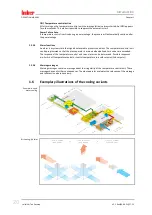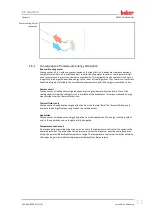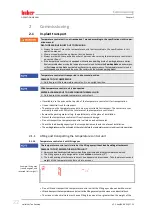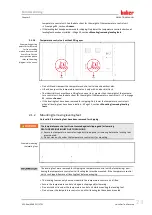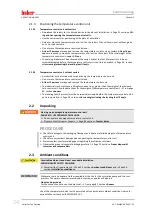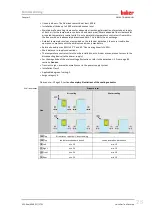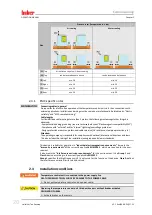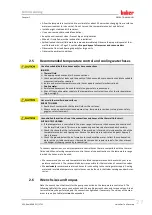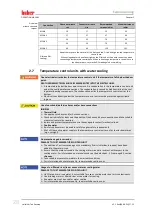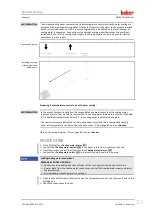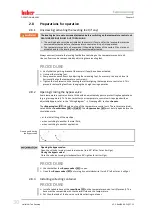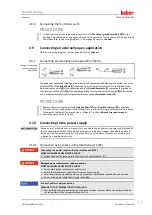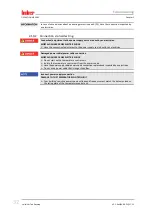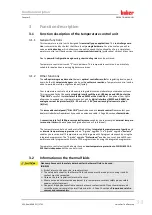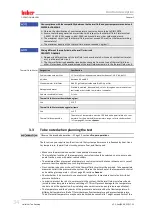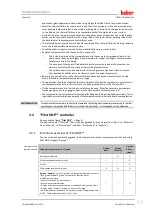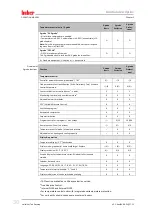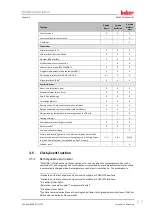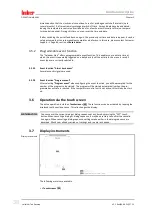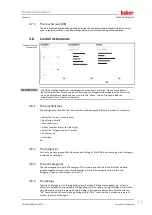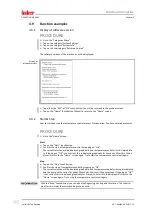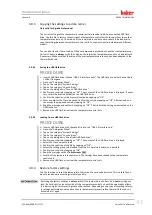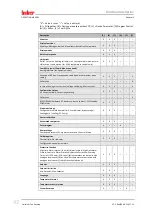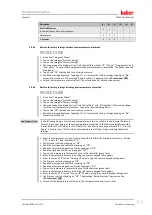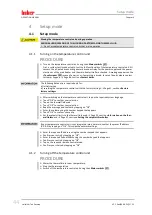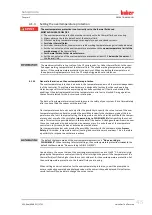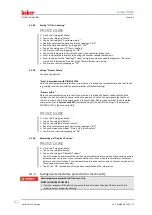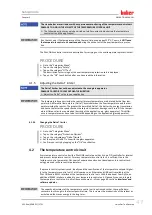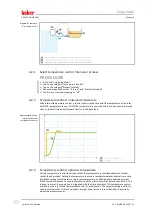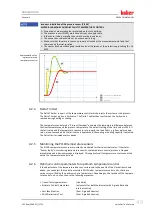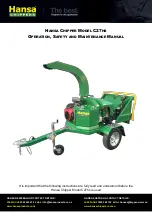
Function description
OPERATION MANUAL
Chapter 3
Unichiller® eo Desktop
V2.2.0en/09.08.21//17.12
34
Non-compliance with the compatibility between the thermal fluid and your temperature control unit
MATERIAL DAMAGE
Observe the classification of your temperature control unit according to DIN 12876.
Ensure the following materials are resistant with respect to the thermal fluid: Stainless steel
1.4301/ 1.4401 (V2A), copper, nickel, FKM, red bronze/brass, silver solder and plastic.
The maximum viscosity of the thermal fluid must not exceed 50 mm²/s at the lowest working
temperature!
The maximum density of the thermal fluid may not exceed 1 kg/dm³!
Mixing different thermofluids in a thermal fluid circuit
PROPERTY DAMAGE
Do
not
mix different types of thermofluid (such as mineral oil, silicone oil, synthetic oil, water,
etc.) in a thermofluid circuit.
The thermal fluid circuit
must
be rinsed when changing from one type of thermal fluid to an-
other. No residues of the previous type of thermal fluid may remain in the thermal fluid circuit.
Designation
Specification
Calcium carbonate per liter
≤ 1.5 mmol/l; corresponds to a water hardness of: ≤ 8.4 °dH (soft)
pH value
between 6.0 and 8.5
Ultrapure water, distillates
Add 0.1 g of sodium carbonate (Na
2
CO
3
) per liter
Not approved water
Distilled, deionized, demineralized, chloric, ferruginous, ammoniacal, con-
taminated or untreated river water or sea water
Volume circulated (at least)
3 l/min.
Thermal fluid: Water without ethylene glycol
Use
≥ +3 °C
Thermal fluid: Water-ethylene glycol mixture
Use
< +3 °C
Thermal fluid composition
The mixture’s temperature must be 10 K below the permissible min. tem-
perature. For the permissible temperature range, refer to the datasheet.
→
3.3
To be noted when planning the test
Observe the intended operation.
→
Page 13, section
The focus is on your application. Bear in mind that system performance is influenced by heat trans-
fer, temperature, thermal fluid viscosity, volume flow, and flow speed.
▪
Make sure the electrical connection is adequately dimensioned.
▪
The installation location of the temperature control unit should be selected so as to ensure ade-
quate fresh air, even with water-cooled chillers.
▪
The maximum flow pressure of a temperature control unit must be taken into account in case of
pressure-sensitive applications, such as glass reactors.
▪
Cross-section reduction or shut-off in the thermal fluid circuit must be avoided. Take appropriate
measures to limit the pressure in the system. Observe the data sheet of the temperature control
unit and the glass apparatus.
→
▪
Check whether it is necessary to use an external bypass for temperature control units without
pressure limitation.
▪
In order to prevent the risk of overpressure in the system, the thermal fluid must always be ad-
justed to room temperature before switching off. This will prevent damage to the temperature
control unit or the application. Any isolating valves must remain open (pressure equalization).
▪
The temperature and the dynamics of the process are determined by the flow temperature. A
differential temperature (Delta T) forms between flow temperature and process temperature.
This differential temperature may have to be limited, because Delta T might exceed limits of the
Thermal fluid: Water

